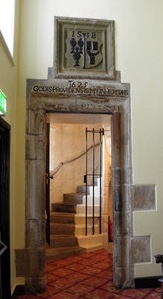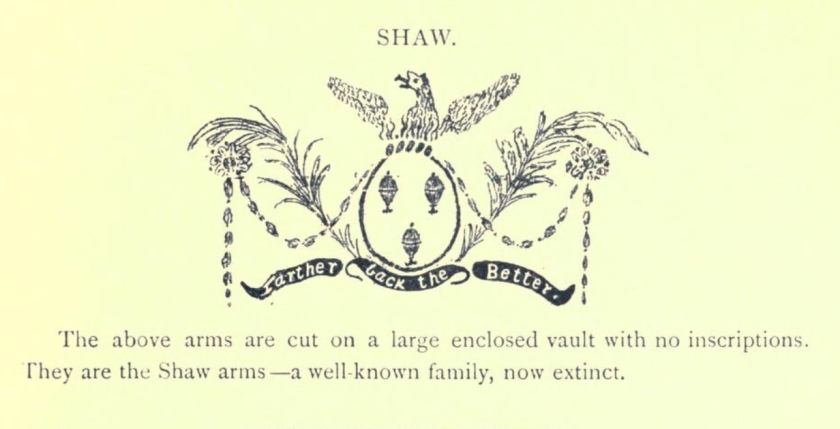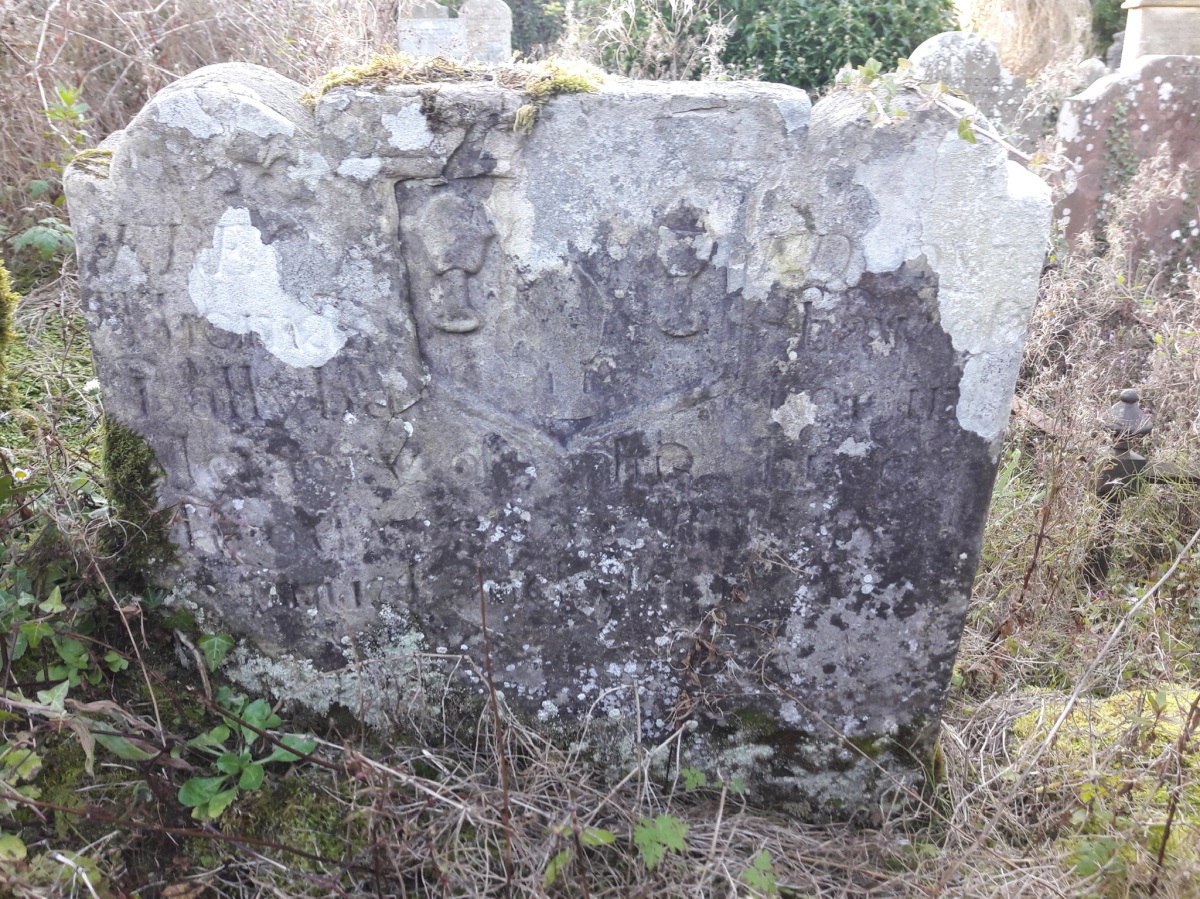In my last post I started my survey of the Shaws in 17th Century Down and Antrim by looking at the Shaws in County Down and their Scottish ancestors. They are quite well documented because of their multiple ties to the powerful Montgomery family who became Viscounts Montgomery of the Great Ards and later on Earls of Mount Alexander. The famous Montgomery Manuscripts contain copious footnotes relating to these Shaws.
The Shaws in Antrim present more of a challenge to untangle, but several researchers have unearthed records relating to them and I’ve found several new ones myself so I’m going to have a go at showing how they piece together.
I believe they were descendants of the original John Shaw who was first granted letters of denization in Ireland in 1615.
- 22 Jun 1615 John Shawe
As I stated previously, this man is not to be confused with the son of the Laird of Greenock who settled at Ballywhiskin in Co Down. According to Classon Porter in his article on Ballygally Castle, John Shaw of Ballygally, Gent appeared on a Co Antrim jury in 1613.
The Shaws of Ballygally
The first Shaws in County Antrim settled in the parish of Carncastle in the Barony of Glenarm. In the 1630 Muster Rolls, the only Shaws in Antrim were all in Glenarm – John, James and an otherwise unknown Lancelot.

John Shaw of Carnfunnock, described as John the younger, was granted land at Carnfunnock, Corkermain and Ballyruther on 1 Feb 1621/2 by the Earl of Antrim. He died on 23 Dec 1635 leaving a 13-year-old heir, James who was referred to as James FitzJohn in an inquisition of 1637.
There’s another John Shawe gent living at Carinfinock as titulado in the Census of 1659/60 but this line of Shaws died out. In the Dublin Registry of Deeds, Deed 6686 says that Isobel Blair (née Shaw) was the heiress of John Shaw of Carnfunnock and sold Carnfunnock, Ballyruther and Corkermain to the Kennedy family in 1692. In 1710 it was sold on to the Agnews. Today Carnfunnock is a country park.
1637 was the year when the lands were regranted to the Shaws by the Earl of Antrim and his brother Alexander. As well as the confirmation of the 1621 grant to John the younger, records in PRONI show grants on 8 August 1637
- to John Shaw the elder, Gentleman, of Ballygalley, of 360 acres of Ballygalley, Tuorenemoary [now Ballygalley?], Nogher [?], Carne Caslen [Carncastle], Corcormion [Corkermain?], the right to take turf from the moor of Killyawnae [Killyglen?] and Loghduffe [Loughduff], the water mill or mills of Ballygalley with the thirle, multure and grist of all the tenants, inhabitants and residents between Corkermain in the north, Ballycraigy in the south, the moor on the west and the sea on the north [sic]. Rent £44, for right to cut turf 3s.4d, King’s rent 20s, receivers fees 12s, best beast as heriot. To enclose 4 acres and plant 40 trees per year. Endorsed with provision for Shaws’s tenant to take turf for their own use from the moors.
- to James Shaw, Gentleman, of Balygalley, the townland of Gallagh, half townland and half quarterland of Ballewillin [Ballywillin], quarterland of Killyglin [Killyglen], 35 acres on the east side of Glenarm, 7 and a half acres of Cappenagh for 41 years. Rent £50, King’s rent £3.9s.4d, receivers fees 25s.0d. To enclose 50 acres and plant 50 trees per year. Endorsed with provision for new lease for 41 years to be granted on the death of James Shaw.

It seems to me most likely that John the elder was the father of John the younger and James (as well as William of Ballybentro and Francis of Dunadry who I will come to later). At Ballygally, James Shaw (born around 1594 according to a statement quoted in The Hereditary Sheriffs of Galloway (Agnew, 1893)) and his wife Isabel Brisbane built a castle in 1625 which is now a hotel and reputed to be the oldest occupied building in Ireland. The hotel trades on the legend of Isabel’s ghost. She is said by some to have died in a tower, locked up for not providing a male heir, but that isn’t true because she and James had two sons.
The first son, James, married his cousin, another Elizabeth Brisbane and adopted her surname to inherit the Brisbane estate in Largs, Scotland. Their descendants included Sir Thomas Makdougall Brisbane (1773-1860) after whom Brisbane in Australia is named. (See Burke’s Commoners for details.)
The second son, Captain John Shaw appears with his father in the 1660 Census (James Shaw Esqr. and John Shaw Esqr. his sonn) and in the 1666 Hearth Rolls, but by 1669 the only Shaws in Carncastle parish are James Shaw and Widow Shaw in Ballyhackett so I think he must have died by this point.
The Shaws of Ballybentragh
EDIT: The will abstract for William Shaw of Ballybantro given below is taken from the Stewart Kennedy notebooks in PRONI. Unfortunately it has a section missing which invalidates some of my conclusions. I address this in another post, but in the meantime I have struck out the bits that are no longer accurate.
It seems the original Shaws of Ballygally had no male heirs because by 1674, Ballygelly appears to have been in the possession of the son of William Shaw of Ballybentragh.
PRONI T/700 p394 Prerogative Will of William Shaw (Gent) of Ballibantro 16 Feb 1674, proved 1675 Mentions: Children William, Francis, Margaret, Isabell, Elizabeth, son Collins, grandson Henry, wife Margaret Shaw als. Maxwell, son John Shaw of Ballygelly.
Ballybentragh townland is adjacent to Templepatrick, so this must be the Mr William Shaw who is listed after Major Edmund Ellis (stepfather of Arthur Upton) in the 1646 list of elders in the Templepatrick Session Book. His daughter Margaret must be the “Margaret Shaw in this parish” who married Captain John Hustowne on 17 April 1648 (fortunately one of the very few records quoted in an article about the Session Book in the Journal of the Royal Society of Antiquaries of Ireland.)
Mr William Shaw and Mr Francis Shaw are in the 1653 list of Presbyterian Landowners to be removed from Ulster. There’s also a Cornet (2nd Lieutenant) John Shaw living in Toome quarter, perhaps at Bush. (Mr James Shaw, Capt John Shaw and John Shaw are on the list for the Barony of Glenarm.)
William (at Ballybentragh) and Francis (at neighbouring Dunadry) appear also in the 1659/60 Census and the Hearth Rolls Returns of 1666 and 1669. In 1666 & 1669 there is also a Mr William Shaw at nearby Doagh Grange.
Notice that if William’s daughter married in 1648, he must have been born by 1610 at the latest, in other words before any of the Shaws were granted Denization in Ireland. So either he is one of the William Shaws granted Denization, or he was born there himself. It also begs the question – where was he at the time of the Muster Rolls in 1630? There were three William Shaws in Ulster on the rolls – one in the Ards (probably William Shaw of Ballykilconan), one in Holywood Co Down and one in Co Tyrone.
The will of William’s son, John Shaw of Ballygally, was written in 1691 but not proved until 1709.
PRONI T828/22 Conveyance and Will of John Shaw of Ballygally 19 May 1691, Probate 29 Jan 1709 Daughters Mary and Rose; Conveyed all his lands and estates in parish of Carnecastle and Kingdom of Ireland to his cousin and son-in-law Henry Shaw of Ballywee.
Henry Shaw is my 9xgreat grandfather, the father of William Shaw of Ballygally.
I think John wrote this will because his son(s) had died in the Williamite Wars. Captain Patrick Shaw of Ballygelly was in the list of Protestants attainted by James II in 1688 and Francis Shaw of Ballibentro’s 1688 will identified John as his father, and named another brother, Henry.
PRONI T/700 p390 Prerogative Will of Francis Shaw of Ballybentro (Gent) Oct 1688, proved 1692 Ballybentro in Grange of Nilteen, Barony of Moylmey Extract mentions: Father John Shaw Brother Henry Shaw Aunt Janet Agnew, Alice Shaw, Henry Shaw of Clogher, Collins Shaw of Bally(crum)?
The Shaws of Bush

People have been asking about William Shaw of Bush for 135 years, as this letter from Walton Graham Berry to the Ballymena Observer of 1883 shows!
William was a Captain in Colonel Skeffington’s Regiment of Antrim Volunteers in the Williamite Wars and High Sheriff of Antrim in 1693.
We know the ages of two of his children. We know his son Thomas was born c1682 because he was aged 16 in a deed of 1698 (PRONI T1213/1) and in 1684/5 a sister was baptised Margaret at Antrim (Ulster Journal of Archaeology).
He had been appointed overseer of the will (Dublin Registry of Deeds 1444) of Lt Col William Shaw (d 1710) of Ganaway in Co Down whose daughter Frances had married his son Patrick in 1706 (discussed in my last post.) When Patrick died in 1715 in Brittas (or “British”, the alternative name used in RoD 6698), Killead Parish, Co Antrim, he named his father William Shaw of Bush and brother John Shaw of Bush as two of the guardians of his young daughter in his will. Patrick also mentions another brother, the Thomas Shaw I mentioned above. Another William Shaw, presumably another brother, had already died at the Bush in 1714.
The Funeral Records of the First Presbyterian Church Belfast record the burial of “Cornl William Shaw of the Bosh” on 6th November 1719 but no trace of his will remains. The only details I know about it come from Mr Berry’s letter. A John Shaw Esqr died at Bush in December 1719 but this was not William’s son because he didn’t die until January 1728/9 shortly after he wrote his will (RoD 40331). (I am not entirely certain who this second John Shaw of Bush is – maybe a grandson of William Shaw of Bush – but it seems likely that these are the two men who were party to the marriage settlement of William McCulloch and Dorothy Beresford Shaw.)
In 1720, Thomas bought Bush Farm from John Shaw (then of Crosskennan, the townland east of Bush) and the deed (RoD 16879) was witnessed by John’s son Henry. These days Bush townland is occupied by Antrim Area Hospital and Junction 7 of the M2 motorway.
John moved to Ballytweedy in Killead parish, one of the townlands acquired by William Shaw of Ganaway. Presumably this was held in trust for John’s ward, Patrick’s daughter Mary.
To explain what happened next, here’s Walton Graham Berry again, this time writing to Notes & Queries about teenage marriages, also in 1883. (Fans of Mr Berry can also see his notes on the Potter family in Miscellanea genealogica et heraldica 1880.)

The marriage is confirmed on p250 of the Montgomery Manuscripts (but Henry is aged 17 in RoD 23590 dated 1720 so he might have been a little older than his wife in actual fact.) Their grandson Henry William Shaw was High Sheriff of Antrim in 1788, and his son of the same name was the last of the Shaws of Ballytweedy.

This much has been known by genealogists all along. But who was William Shaw of Bush?
William is named as a brother by Margaret Houston als Shaw in her will of the early 18th century.
Margaret Houston of Craigs, widow of William Houston of Craigs burial at Church of Ahoghill Son Francis Houston of Drummacks Daughter [Letitia Tilson, wife of John Houston of Castlestewart] of Castle Houston in the County of Tyrone; Granddaughter Margaret Houston daughter of son Francis Houston, married to Cornelius Crimble Brother William Shaw of Bush Sons James McCulloch [of Grogan, married to Jenet Houston]; Henry McCulloch [of Fewghogue, married to Helen Houston]; and Patrick Agnew [of Kilwaughter, married to Martha Houston] Grandson William McCulloch [son of James McCulloch of Grogan] Pg 131, Diocese of Connor, Will of Margaret Houston PRONI
The strange thing is William Houston’s will gives William Shaw as a son-in-law:
William Houston of Craig in Co Antrim, Esq Will dated 3 April 1685, proved 21 May 1685 1) John 2) Robert Houston, 2nd son 3) Mary, wife of William Shaw 4) Katherine, wife of Joseph Johnston 5) Helen, wife of Henry McCullock 6) Anne 7) Martha 8) Jenet p 148 Betham’s Will Pedigrees, Genealogical Office Manuscript 225
At first I thought that William had married his niece! Rejecting that idea, I thought that Mary Houston had married the younger William Shaw, but that would have meant a huge age gap between William Shaw junior and his siblings.
In the end I noticed that Margaret and William’s lists of children only match at the ends. I think they were both on their second marriages. Margaret’s first husband was also a Houston, namely Capt John Houston who she married in 1648. Her second husband was not only her brother-in-law but also her brother’s father-in-law. (Nothing wrong with that!) So William Shaw of Bush is the son of William Shaw of Ballybentragh which makes perfect sense because his mother was Margaret Maxwell and he has a cousin called Maxwell according to Mr Berry’s letter. It also makes it likely that he was the William Shaw living at Doagh near Ballybentragh in 1669.
Thus William McCulloch and Dorothy Beresford Shaw were both descended from William of Ballybentragh. William was a great grandson via Margaret Shaw als Houston and Dorothy was a great great granddaughter via her grandmother Mary Shaw and possibly via her grandfather Henry Shaw too.
And the seal on his will described by Mr Berry proves that like the Shaws of Ballyganaway and the Shaws of Ballygally, the Shaws of Ballybentragh and Bush were related to the Schaws of Greenock and Sauchie.

There are still one or two loose ends
- Who was Henry Shaw of Ballywee?
- Who was John Shaw of Bush who died in 1719?
- Which John Shaw was High Sheriff of Antrim in 1660?
but I think I’ve more or less rounded up how all the Shaws of Down and Antrim descend from the original small group who were granted Denization between 1615 and 1625. I’ve shown that all the branches used the Shaw coat of arms (either with or without a mullet) so they are all related to the Shaws of Greenock.
Now all that remains is to work out how!

Great information. James Shaw was my 8th Great Grandfather.
LikeLike
I am a Shaw from Antrim. There were very few outside Belfast. I grew up near where you mentioned was owned by Shaw and turned into Junction One. Interesting stuff. I have no Shaw relations I know of as my father was adopted. I was told their was quite a backstory of descendants bu as I’ve no connection to Antrim other than being raised there, I assumed i was the Shawss of Bushy Park in Dublin.
LikeLike